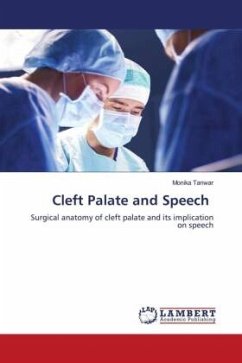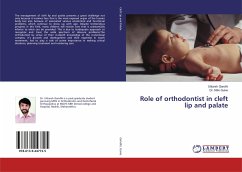
Cleft Palate and Speech
Surgical anatomy of cleft palate and its implication on speech
Versandkostenfrei!
Versandfertig in 6-10 Tagen
40,99 €
inkl. MwSt.

PAYBACK Punkte
20 °P sammeln!
Cleft palate is one of the most common craniofacial deformity encountered by maxillofacial surgeons. The palatal anatomy is as itself is complex, the presence of cleft makes it more difficult to understand. The consequences of an orofacial cleft are not limited to cosmetic deformities, but also dental abnormalities, speech distortion, disorganized swallowing, and growth difficulties. In approaching any surgical problem, one must have an understanding of both normal and aberrant anatomy. The first priority for a child born with cleft lip and palate is feeding. This is to ensure that the child m...
Cleft palate is one of the most common craniofacial deformity encountered by maxillofacial surgeons. The palatal anatomy is as itself is complex, the presence of cleft makes it more difficult to understand. The consequences of an orofacial cleft are not limited to cosmetic deformities, but also dental abnormalities, speech distortion, disorganized swallowing, and growth difficulties. In approaching any surgical problem, one must have an understanding of both normal and aberrant anatomy. The first priority for a child born with cleft lip and palate is feeding. This is to ensure that the child meets the nutritional and growth requirements needed for surgery. The next function to be restored is speech production. in many cases a cleft patient is not referred to a speech pathologist until the problem becomes evident. In the past decade, there has been a paradigm shift in the approach towards the management of communication disorders in very young children with cleft lip and palate.












